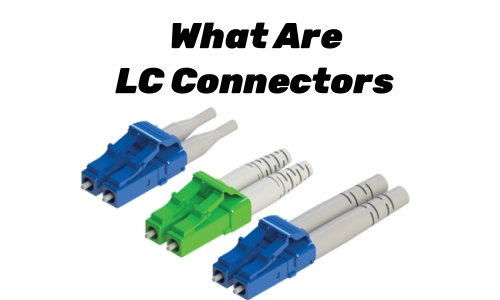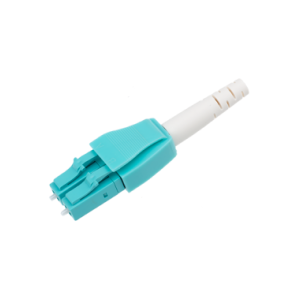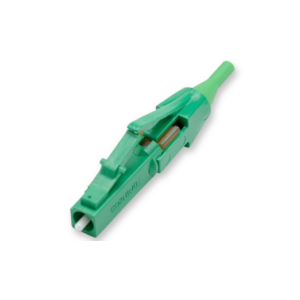OUTLINE:
The Basis of LC Connectors
 198
198Step into the fast-paced realm of modern connectivity, where data travels at the speed of light and the unsung hero, the LC connector, takes center stage.
Get ready for an exciting journey as we unveil the secrets in our comprehensive overview, "An Overview: What Are LC Connectors." Whether you're a tech enthusiast or a curious beginner, join us on this adventure to demystify the magic behind LC connectors.
From their sleek design to their pivotal role in revolutionizing data transmission, discover how LC connectors are shaping the future of seamless, high-speed connectivity.
Buckle up for an exploration that promises to unravel the fascinating world of LC connectors and their impact on the digital landscape!

A Quick Answer: What Are LC Connectors
LC connectors are compact, high-performance optical fiber connectors commonly used in data communication and networking.
Known for their small form factor and ease of use, LC connectors feature a push-pull design and are prevalent in applications such as data centers, telecommunications, and high-speed internet connections.
Their versatility and reliable performance make them a popular choice for ensuring efficient and fast optical signal transmission between devices.
The Versions of LC Connectors
LC connectors come in different versions, each designed to meet specific requirements and industry standards. Here are some common versions of LC connectors:
- Standard LC Connector
The standard LC connector is widely used in various applications.
It features a 1.25mm ceramic ferrule and is known for its compact design, making it suitable for high-density installations in data centers and telecommunication networks.

- Uniboot LC Connector:
Uniboot LC connectors are designed with a single boot that houses both fibers in a duplex configuration.
This design helps in maximizing the density of fiber optic connections and minimizing cable congestion, making it ideal for environments where space optimization is crucial.

- Angled Physical Contact (APC) LC Connector
The APC LC connector is engineered with an angled ferrule end-face, reducing back reflection and minimizing signal loss.
It is commonly used in applications where low signal loss and high return loss are critical, such as in fiber optic systems for cable television (CATV) and passive optical networks (PON).

- Extended LC Connector
Extended LC connectors have a longer ferrule compared to the standard LC, providing enhanced performance in terms of lower insertion loss and higher return loss.
This version is often used in applications requiring superior optical characteristics.
- Small Form-Factor LC Connector (SFF LC)
SFF LC connectors adhere to a smaller form factor, making them suitable for compact devices and equipment with limited space. Despite their reduced size, they maintain compatibility with standard LC connectors, ensuring versatility in various applications.
- High-Density LC Connector
High-density LC connectors are designed to maximize port density on patch panels and equipment.
They often feature a smaller footprint, allowing network administrators to accommodate more connectors in a confined space.
- Reduced LC Connector (RLC)
RLC connectors, also known as Mini LC, feature a reduced size compared to the standard LC.
This version is particularly useful in applications where space constraints are critical, offering a solution for environments where traditional connectors may be too large.
What Is An LC Connector Used For
LC connectors are widely used in optical fiber communication systems for establishing reliable and high-performance connections. Here are some common applications and use cases for LC connectors:
- Data Centers
LC connectors are extensively used in data centers for their compact design and high-density capabilities.
They facilitate quick and efficient connections between networking equipment, ensuring seamless data transmission.
- Telecommunications Networks:
LC connectors play a crucial role in telecommunications networks, connecting optical fibers in the transmission and reception of data.
Their small form factor makes them suitable for use in both local and long-distance communication systems.
- High-Speed Internet Connections
LC connectors are commonly found in high-speed internet installations, including Fiber to the Home (FTTH) and Fiber to the Premises (FTTP) networks.
They enable fast and reliable transmission of data for broadband internet services.
- Networking Equipment
LC connectors are used in networking equipment such as switches, routers, and transceivers.
Their popularity in networking applications is due to their ease of use, reliability, and compatibility with various optical fiber types.
- Broadcasting and CATV (Cable Television)
In broadcasting and cable television (CATV) applications, LC connectors are utilized to ensure efficient and clear signal transmission over optical fiber networks.
The connectors' performance characteristics make them suitable for delivering high-quality audio and video signals.
- Passive Optical Networks (PON)
LC connectors are employed in PON systems, which are commonly used for delivering fiber-optic-based broadband services.
They help establish reliable connections between optical network terminals (ONTs) and the central office equipment.
What Is the Difference between LC and CS Connectors
LC (Lucent Connector) and CS (Continuous Strip) connectors are distinct types of optical fiber connectors with differences in design, applications, and performance characteristics.
Here are some key differences between LC and CS connectors:
1. Design
- LC Connector
The LC connector is a small form-factor connector with a 1.25mm ceramic ferrule. It features a push-pull mechanism for easy insertion and removal.
- CS Connector
The CS connector, on the other hand, is designed with a continuous strip, offering a larger surface area for optical connections.
It typically has a larger form factor compared to LC connectors.
2. Size and Density
- LC Connector
Known for its small form factor, the LC connector is suitable for high-density applications where space optimization is crucial, such as in data centers and telecommunications networks.
- CS Connector
CS connectors are generally larger than LC connectors, and their design may not be as conducive to high-density installations.
They are often used in applications where size constraints are less critical.
3. Applications
- LC Connector
LC connectors are commonly used in a variety of applications, including data centers, telecommunications networks, and high-speed internet installations.
Their small size and reliable performance make them versatile in different environments.
- CS Connector
CS connectors are often used in specific applications where the continuous strip design is advantageous.
They may find use in certain industrial or specialized optical fiber systems.
4. Insertion Loss
- LC Connector
LC connectors typically have low insertion loss, contributing to efficient and reliable signal transmission.
- CS Connector
The insertion loss of CS connectors may vary based on the design and specific application.
In some cases, the continuous strip design may help minimize insertion loss.
Comparison Between LC Connectors, SC Connectors, MTP Connectors
LC (Lucent Connector):
Size: Smaller form factor, with a 1.25mm ferrule, making it ideal for high-density applications.
Latch Mechanism: Uses a latch to secure the connection, similar to a telephone or RJ-45 connector.
Applications: Commonly used in data centers and high-density patch panels due to its compact size.
SC (Subscriber Connector):
Size: Larger form factor, with a 2.5mm ferrule, providing a more robust connection.
Push-Pull Design: Features a push-pull mechanism for easy insertion and removal.
Applications: Widely used in network applications, including telecommunications and cable TV, where space is less of a concern.
Difference Between MTP and LC Connectors
MTP (Multi-Fiber Termination Push-on):
Fiber Count: Supports multiple fibers (usually 12 or 24), enabling high-density connections.
Applications: Ideal for high-speed data communication and large-scale data center environments, where multiple fibers are required.
Design: Features a robust, single-connector design for quick and reliable connections.
The End
What are LC connectors, we unveil them as the unsung heroes of seamless communication.
These connectors, though small in size, wield incredible power, driving high-speed data transmission in data centers and telecommunications networks.
As we bid adieu, let's raise a toast to the mighty yet modest LC connector—a symbol of efficiency, reliability, and the boundless potential of interconnected technology.
Here's to the LC connector, where small meets extraordinary in the ever-evolving symphony of connectivity.

Disclaimer: The views and opinions expressed by individual authors or forum participants on this website do not represent the views and opinions of Chipsmall, nor do they represent Chipsmall's official policy.

share this blog to:

